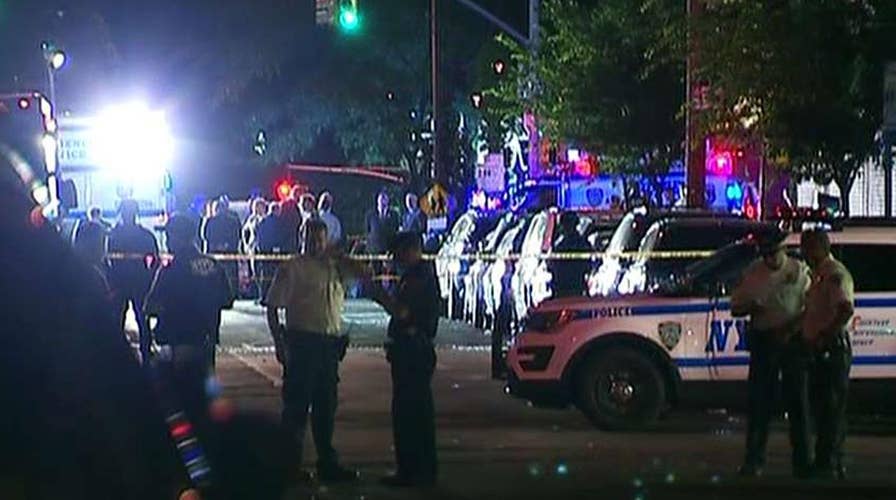Federal, state and local law enforcement officers and prosecutors have honored a longstanding practice to assure public safety and the rule of law by enforcing the laws that legislatures enact. In that spirit, Department of Justice policies since the 1980s directed federal prosecutors to charge the most serious readily provable offense, unless justice required otherwise. It’s undisputed that this charging practice, applied over the course of several Republican and Democratic administrations in recent decades, contributed to the reduction of violent crime by half between 1991 and 2014.
The Obama administration’s “Smart on Crime” initiative – touted by former Deputy Attorney General Sally Yates in a recent oped in the Washington Post titled “Making America scared again won’t make us safer” – undermined those hard-fought gains in public safety, and ushered in significant increases in violent crime. In 2015, violent crime rose 5.6 percent—the greatest increase since 1991—and included a shocking 10.8 percent increase in homicide rates. And, although the final numbers for 2016 have not been published, the preliminary data suggests another substantial increase in the violent crime rate.
Among the policies championed by then Attorney General Eric Holder and Deputy Attorney General Yates was one that reversed long-standing charging policies and directed federal prosecutors to avoid minimum sentences against drug traffickers, as mandated by Congress, and instead pursue lesser charges. Despite the well-known and deadly violence associated with drug cartels, gangs and their networks, the Holder-Yates policies directed federal prosecutors in certain cases to under-charge drug trafficking cases and avoid triggering statutory minimum penalties by not pressing charges on the actual amount of drugs that traffickers distributed, such as heroin, crack cocaine, and methamphetamine.
Despite the evocative “second chance” narrative that stirs support among sentencing reformers, law enforcement professionals also know that the people who end up in federal prison work hard to get there.
Changes in federal law enforcement policy can ripple through communities across the country and affect their safety. “Smart on Crime” was part of a larger policy shift within the Obama administration from drug abstinence and accountability to drug acceptance and victimization. Since its inception, correlative increases in drug abuse, overdose deaths and violent crime have had a devastating impact on every community, regardless of sex or demographics. The reduced charging and sentencing of thousands of drug traffickers and their early release from prison -– all hallmarks of the Holder-Yates policies of the Obama years – have begun to leave their devastating mark downstream on the safety of communities across the nation. The surge in violent crime should not be surprising. Drug trafficking by its very nature, is a violent crime.
Take the recent account of Michael Bell, a former federally-convicted methamphetamine dealer who, when facing new state charges in Tennessee for kidnapping and domestic assault, shot two sheriff’s deputies during a court proceeding. Bell would have still been in federal prison had he not been released in 2015, three years earlier than scheduled, because of the across-the-board sentencing reductions prior administration leaders pushed the U.S. Sentencing Commission to impose.
Not surprisingly, those former officials continue to use the term “low level, non-violent offender” to promote a sanitized narrative of drug trafficking for profit. Law enforcement professionals know that drug trafficking enterprises are comprised of integrated networks of street corner dealers, mid-level traffickers, distributors, producers and cartel leaders, whose collective efforts inherently rely on violence and have contributed to the deaths of over 50,000 Americans last year in drug overdoses alone.
Despite the evocative “second chance” narrative that stirs support among sentencing reformers, law enforcement professionals also know that the people who end up in federal prison work hard to get there. Few offenders go to prison for their first offense, or even the second or third. Many of the people who end up in federal prison have committed violent crimes, are members of drug trafficking and criminal organizations or simply have chosen to continue to disregard our laws. Because the majority of criminals admit their guilt, plea bargaining involves the dismissal or reduction of related charges, which greatly reduces the criminal histories and sentences of countless criminals. That means the numbers and types of crimes for which many of them are arrested, but never charged or convicted, are incalculable. Criminals are committing thousands of crimes and violent acts against our citizens for which they are never held accountable.
Seeking justice and keeping the peace, it is federal law enforcement agencies and their state and local partners who will strive to enforce the laws that Congress enacted to protect our country and its citizens. The surest way to preserve public safety is to honor the laws the people have passed and to enforce them to the fullest.
Lawrence J. Leiser is president of the National Association of Assistant United States Attorneys. Nathan Catura is president of the Federal Law Enforcement Officers Association. Bob Bushman is president of the National Narcotics Officers’ Associations’ Coalition. Al Regnery is chairman of the Law Enforcement Action Network. Ron Hosko is president of the Law Enforcement Legal Defense Fund. Harold Eavenson is President of the National Sheriffs’ Association. Larry Langberg is President of the Society of Former Special Agents of the FBI.

